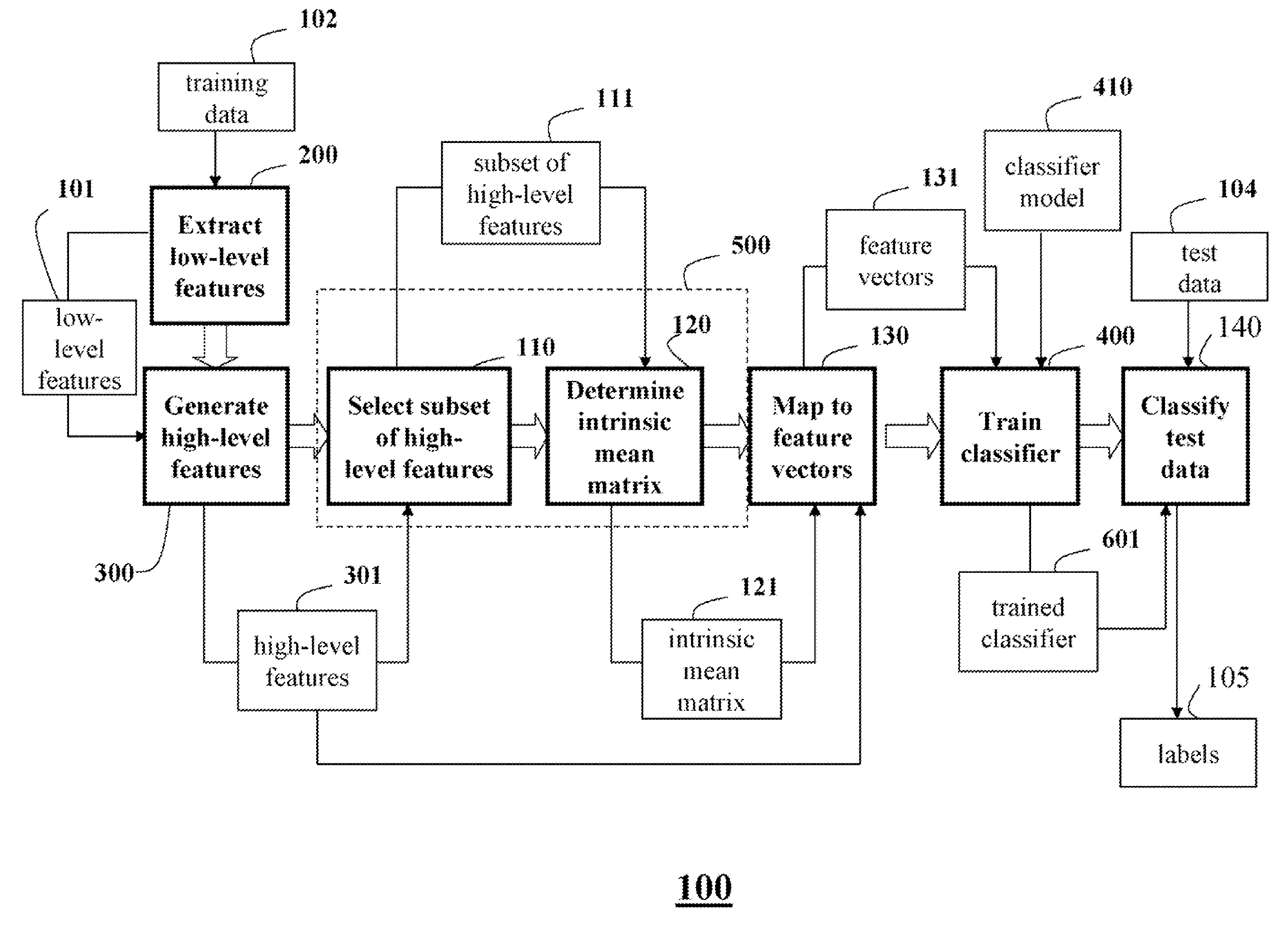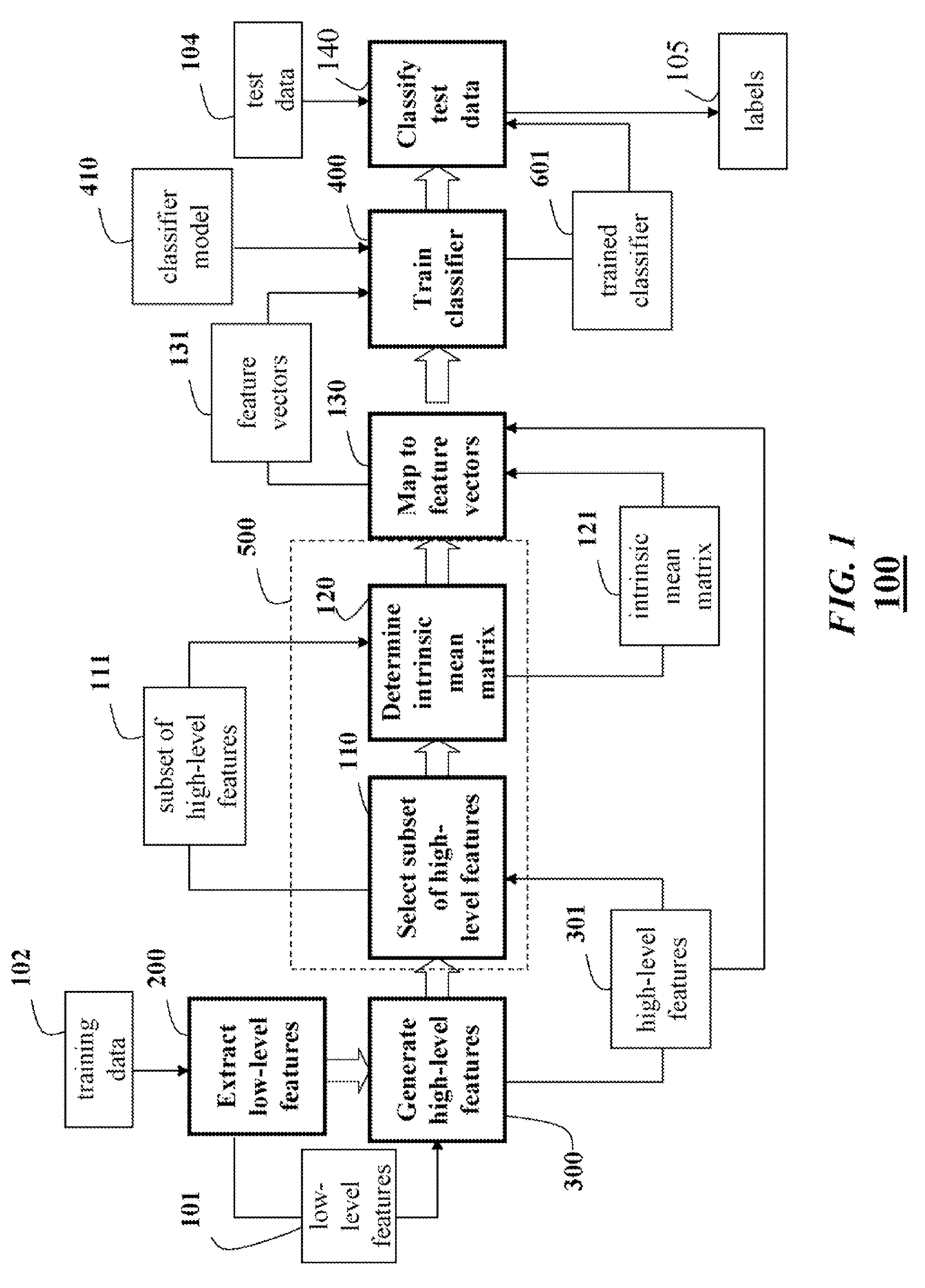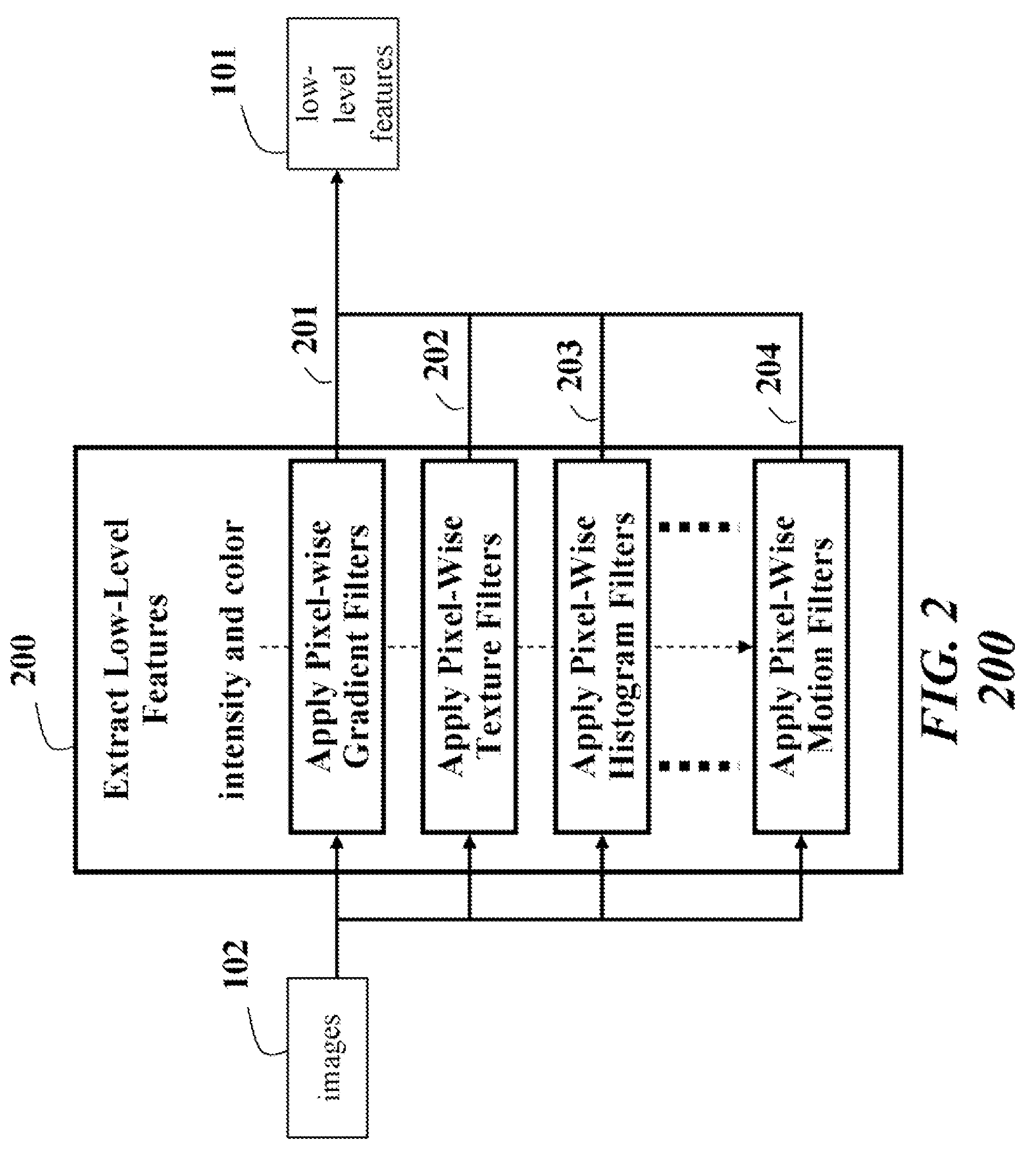Detecting moving objects in video by classifying on riemannian manifolds
a technology of moving objects and classifiers, applied in the field of classifying objects in images, can solve the problems of insufficient training of classifiers to detect objects according to well-known machine learning techniques
- Summary
- Abstract
- Description
- Claims
- Application Information
AI Technical Summary
Benefits of technology
Problems solved by technology
Method used
Image
Examples
Embodiment Construction
[0045]Classifier Construction and Classification
[0046]FIG. 1 shows a method 100 for constructing a trained classifier according to an embodiment of our invention. The classifier is constructed and trained using training data. By training data, we mean that the data are already labeled. The training data are used both to extract (labeled) features and to verify or measure a performance of the trained classifier. The trained classifier can then be used to classify test data.
[0047]Low-level features 101 are extracted 200 from training data 102. The low-level features 101 are used to generate 300 high-level features 301. The high level-features are the form of positive definite matrices on an analytical manifold.
[0048]A subset 111 of the high-level feature 301 is selected 110. The subset 111 of the selected high-level features are used to determine 120 an intrinsic mean covariance matrix 121. The intrinsic mean covariance matrix 121 defines a tangent space of the analytical manifold for...
PUM
 Login to View More
Login to View More Abstract
Description
Claims
Application Information
 Login to View More
Login to View More - R&D
- Intellectual Property
- Life Sciences
- Materials
- Tech Scout
- Unparalleled Data Quality
- Higher Quality Content
- 60% Fewer Hallucinations
Browse by: Latest US Patents, China's latest patents, Technical Efficacy Thesaurus, Application Domain, Technology Topic, Popular Technical Reports.
© 2025 PatSnap. All rights reserved.Legal|Privacy policy|Modern Slavery Act Transparency Statement|Sitemap|About US| Contact US: help@patsnap.com



